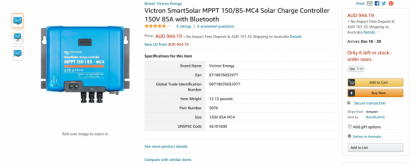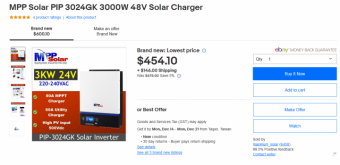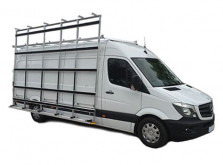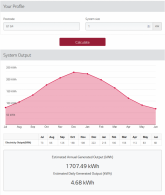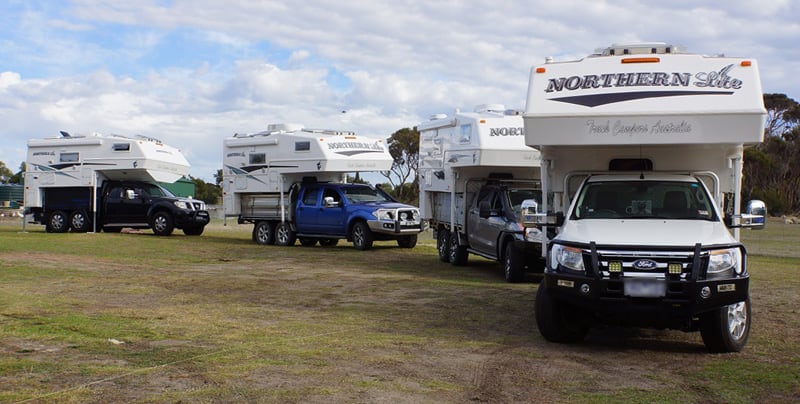Hello.
First post. I have sat on the side for a few weeks.
The audacity of covid.
I was never going to do the grey nomad thing. Hauling a caravan around the countryside will not cut it with me. Then I saw Canada and saw that you could get a campervan and drive and park and see. Plan A was to go to Canada and get a Promaster LWB EXT hi roof and do a high quality build with a high spec. Then cruise thru Canada and the US over 2 years and ship the van to Australia. I am comfortable driving left hand in Aus. Not so the other way. Then do the lap of honour around Australia and a couple of eights. Then use the van for getaways. In due course give the van to the kids.
Covid changes that. Now I am looking at getting a good used van in Australia, doing a high quality build with functional spec to a budget. Do the Australia and New Zealand touring and sell. The build would have to be cost effective as the resale value would be based on the vehicle. The buyers expect the fitout for nothing. We would have to target the $50,000 range. If it is safe to travel then I would repeat the build in mirror image in Canada and tour there including the States, selling after two years. Again, the build would be aimed at the resale value.
There is not much cost between a high quality build and a bad build. Just care and attention. However there is a lot of money between a functional spec and high spec. A lot of that money (most) is in the electrical. For that area I need advice so that I clearly see where I am going. I have been a builder all my life, I have a EE that I play golf with, a BIL who is a process engineer and 4 nephews that are electricians. I still have to point the direction for them to help.
I am looking at all electric. Thus there will be induction cooking and some common appliances. I am trying to avoid the microwave or oven but her indoors may have something to say about that. The fridge has to be largish but 12v. With the exception of the A/C the 240v and 12v loads are standard and well covered with the battery.
In Australia there is no getting away from the heat. Nor will there be getting away from the humidity especially in Northern Territory and Queensland. I am hoping that the heat can be managed with only running the A/C 6-8 hours per day. The A/C will be a 8,000 BTU window A/C with soft start, mounted high inside and vented. This will be the heaviest demand for maybe 4 months of the year. The upside is that when the A/C is needed, the sun will also be shining.
I am not interested in boondocking so we will be driving 2-4 hours most days. Do some sightseeing, fishing or golfing. Find an over night parking spot, rinse and repeat. As required, we will stop in a caravan park for a recharge, water and laundry. I apologise for the ramble, I think it will help.
I am proposing 3 x 370 w panels on the roof. That is the practical roof real estate. I am proposing a 24v 280AH battery made from 8 280AH LiFePO4 cells. This will then have a 24v to 12v convertor for the 12v loads and a 2000 W or 3000 W 24v t0 240v inverter. This may also have a charger.
I do not propose at this stage to consider running off the chassis alternator.
Should there be a shortfall in solar input, I can add another panel at a higher level over the exhaust fan (or even relocate the fan). I can also set up to deploy 2 panels from under the original three panels. Thus we can have 3,4,5 or 6 panels if required. If there is a shortfall in battery capacity, we can add another 24v 280AH battery. (increase to 48V ??)
The extra 2 panels deployed from under the main panels seem to be practicable as an awning on the side of the van. Thus we are better to consider 3 panels then 5 panels and 6 panels if required.
The battery will be the 280AH cells as detailed on this forum. The solar panels will be Solaria PowerXT-370R-PD monocrystalline silicon panels. 48.3v @9.2A. Max 54.3v @15A. https://static1.squarespace.com/sta...00115/Datasheet_PowerXT_Resi-370PD_Rev_04.pdf
What I need is the simplest, safest, cost effective and reliable means to get the solar power into the battery and then out into the house 12v and 240v circuits.
Could this PIP 3024GK do the job? https://www.mppsolar.com/v3/pip-gk-series/
I will take all advice.
Thanks Beton
First post. I have sat on the side for a few weeks.
The audacity of covid.
I was never going to do the grey nomad thing. Hauling a caravan around the countryside will not cut it with me. Then I saw Canada and saw that you could get a campervan and drive and park and see. Plan A was to go to Canada and get a Promaster LWB EXT hi roof and do a high quality build with a high spec. Then cruise thru Canada and the US over 2 years and ship the van to Australia. I am comfortable driving left hand in Aus. Not so the other way. Then do the lap of honour around Australia and a couple of eights. Then use the van for getaways. In due course give the van to the kids.
Covid changes that. Now I am looking at getting a good used van in Australia, doing a high quality build with functional spec to a budget. Do the Australia and New Zealand touring and sell. The build would have to be cost effective as the resale value would be based on the vehicle. The buyers expect the fitout for nothing. We would have to target the $50,000 range. If it is safe to travel then I would repeat the build in mirror image in Canada and tour there including the States, selling after two years. Again, the build would be aimed at the resale value.
There is not much cost between a high quality build and a bad build. Just care and attention. However there is a lot of money between a functional spec and high spec. A lot of that money (most) is in the electrical. For that area I need advice so that I clearly see where I am going. I have been a builder all my life, I have a EE that I play golf with, a BIL who is a process engineer and 4 nephews that are electricians. I still have to point the direction for them to help.
I am looking at all electric. Thus there will be induction cooking and some common appliances. I am trying to avoid the microwave or oven but her indoors may have something to say about that. The fridge has to be largish but 12v. With the exception of the A/C the 240v and 12v loads are standard and well covered with the battery.
In Australia there is no getting away from the heat. Nor will there be getting away from the humidity especially in Northern Territory and Queensland. I am hoping that the heat can be managed with only running the A/C 6-8 hours per day. The A/C will be a 8,000 BTU window A/C with soft start, mounted high inside and vented. This will be the heaviest demand for maybe 4 months of the year. The upside is that when the A/C is needed, the sun will also be shining.
I am not interested in boondocking so we will be driving 2-4 hours most days. Do some sightseeing, fishing or golfing. Find an over night parking spot, rinse and repeat. As required, we will stop in a caravan park for a recharge, water and laundry. I apologise for the ramble, I think it will help.
I am proposing 3 x 370 w panels on the roof. That is the practical roof real estate. I am proposing a 24v 280AH battery made from 8 280AH LiFePO4 cells. This will then have a 24v to 12v convertor for the 12v loads and a 2000 W or 3000 W 24v t0 240v inverter. This may also have a charger.
I do not propose at this stage to consider running off the chassis alternator.
Should there be a shortfall in solar input, I can add another panel at a higher level over the exhaust fan (or even relocate the fan). I can also set up to deploy 2 panels from under the original three panels. Thus we can have 3,4,5 or 6 panels if required. If there is a shortfall in battery capacity, we can add another 24v 280AH battery. (increase to 48V ??)
The extra 2 panels deployed from under the main panels seem to be practicable as an awning on the side of the van. Thus we are better to consider 3 panels then 5 panels and 6 panels if required.
The battery will be the 280AH cells as detailed on this forum. The solar panels will be Solaria PowerXT-370R-PD monocrystalline silicon panels. 48.3v @9.2A. Max 54.3v @15A. https://static1.squarespace.com/sta...00115/Datasheet_PowerXT_Resi-370PD_Rev_04.pdf
What I need is the simplest, safest, cost effective and reliable means to get the solar power into the battery and then out into the house 12v and 240v circuits.
Could this PIP 3024GK do the job? https://www.mppsolar.com/v3/pip-gk-series/
I will take all advice.
Thanks Beton



